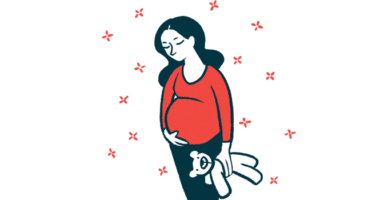Losing my hair during chemotherapy has resulted in unexpected issues
My rare disease led to many losses, but I wasn't prepared for these

Water hits my head for the first time in five long weeks, and feeling it flow down my back is like being reborn. I never knew how much a simple shower could heal my soul. I slowly raise my weak arms to my head and massage in the water. But my relaxed feeling is cut short when I look at my hands and they are full of large clumps of hair.
I’d nearly died five weeks earlier due to complications of atypical hemolytic uremic syndrome (aHUS). Only two drugs have been approved by the U.S. Food and Drug Administration to treat this rare disease: Soliris (eculizumab) and Ultomiris (ravulizumab-cwvz). I take Soliris, which unfortunately can cause a slew of side effects, including hair loss.
I was a fall-risk patient in the intensive care unit, so showering was out of the question. I pushed hard to leave the hospital once I had a diagnosis and care plan, and I got two nights of peace and feeling normal at home before I fell and was readmitted with a liver puncture and large hematoma.
Before my fall, I was incredibly weak but determined to take a shower. Physically, it was exactly what I needed — but I wasn’t expecting to have a traumatic flashback to my painful childhood. I slowly sank to the shower floor as I pulled out more handfuls of hair.
This moment instantly took me back to a memory burned into my mind: sitting on the floor in front of my mother as she brushed out huge chunks of my beautiful red hair.
As a biracial woman of African American and Mohawk Indian descent, I’ve always struggled with my hair. My mother and maternal grandmother were lucky and had long black hair, but I took after my father and have kinky hair. I’ve dealt with hair inadequacies all my life and am constantly doing different things to it.
As if cultural hair issues weren’t enough, I also have systemic lupus erythematosus — the most common kind of lupus that mostly affects my skin, hair, and joints. The first time I had a lupus flare was in first grade. Following a bout of the flu, nearly all of my hair fell out. It was traumatic and embarrassing, and I was teased mercilessly by my classmates about it.
I’m a grown woman now, but losing my hair made me relive those childhood experiences. I recalled 8-year-old me sobbing and asking my mother, “Why me? Why is my hair falling out?” She was visibly upset, but all she could do was shake her head.
Dealing with daily inconveniences
Hair loss is an awful symptom of chemotherapy. It may seem purely cosmetic, but hair can be a part of our identity. aHUS had already taken so much from me, and now it was taking my hair, too.
I wear wigs full time now, which can be frustrating, but it saves me a lot of time getting ready. I tend to have several large bald spots on my head at any given time.
Another odd thing about chemo-induced hair loss is that it affects body hair, too. I don’t have many eyelashes or eyebrows, which proves problematic daily. I must pull my eyelids away from my eyes at least two or three times a day to scrape out things like lint, lashes, makeup, or fine hairs. It’s unreal how badly a tiny piece of fuzz can irritate my eye all day if not removed.
Applying fake eyebrows and lashes is also a taxing affair. I either draw on my eyebrows daily, do a henna-style temporary tattoo, or use fake tattoo stickers. For eyelashes, I occasionally wear fake ones, but they’re a lot of work and it’s a nightmare trying to wash off the glue eyeliner without getting it into my eyes.
I also have no nose hairs, so I deal with the weirdest debris blowing into my nose regularly because there’s nothing to stop it or slow it down. This leads to a lot of itchy twitches in my nose and sneezing.
Lastly, most of my body hair fell out and grows back sporadically, which has led to another funny problem: Most of my body hair grows back blond. I’d bought an at-home laser hair removal device, but it doesn’t work on light hair or hair that’s lighter than your skin tone. So now the device is mostly useless.
These problems may seem trivial in the grand scheme of things — simple inconveniences that are nothing compared with the major medical issues I’ve endured. But it’s funny to bring them up, because if those kinds of problems are the worst part of my day, then that means my life is slowly getting back to normal.
Note: aHUS News is strictly a news and information website about the disease. It does not provide medical advice, diagnosis, or treatment. This content is not intended to be a substitute for professional medical advice, diagnosis, or treatment. Always seek the advice of your physician or other qualified health provider with any questions you may have regarding a medical condition. Never disregard professional medical advice or delay in seeking it because of something you have read on this website. The opinions expressed in this column are not those of aHUS News or its parent company, Bionews, and are intended to spark discussion about issues pertaining to aHUS.








Comments